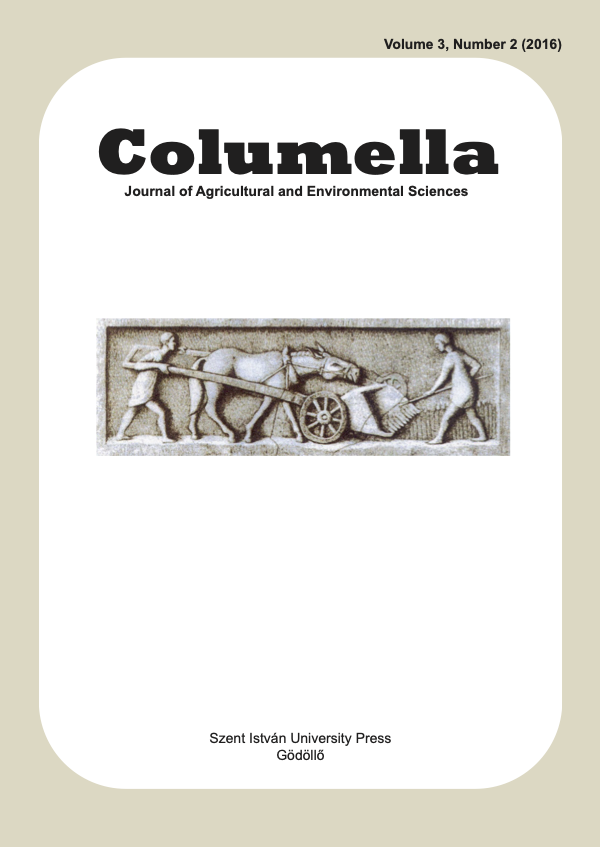Laboratory studies on the effects of a neonicotinoid-containing seed treatment product on non-target soil animals
DOI:
https://doi.org/10.18380/SZIE.COLUM.2016.3.2.7Keywords:
side effect, thiamethoxam, Collembola, NematodaAbstract
Cruiser 350 FS (Syngenta) is a widely applied thiamethoxam-containing seed treatment product. Despite of this fact, little is known about its side effects on non-target organisms other than bees. In this study, the effects of Cruiser 350 FS mixed in soil in different concentrations (according to OECD standards) were investigated on the mortality and reproduction of a Collembola species (Folsomia candida). On the basis of springtail mortality data, an LC50 of 223.6 mg/kg and a NOEC of 24.5 mg/kg were determined for Folsomia candida. The following toxicological limits were obtained on the basis of the reproduction data from the springtail test: EC50: 61.73 mg/ kg, NOEC: 12.27 mg/kg. Moreover, mortality tests were performed in microplates on two nematode species of different feeding and reproductive strategies. After 24 hours of exposure, treatment had no effect on mortality up to a concentration of 35 g of thiamethoxam/l in the r-strategist bacterivorous Panagrellus redivivus; while the species-specific LC50 was determined to be 0.19 g/l for Xiphinema vuittenezi. Our results proved the K-strategist plant-feeding X. vuittenezi to be more sensitive than the r-strategist bacterivore P. redivivus. Our results highlight the difference in the sensitivity of nematodes of different feeding and functional groups, suggesting the importance of a more sophisticated study approach.
Downloads
Published
Issue
Section
License
Copyright (c) 2016 Anikó Seres, Krisztina Hrács, Gergő Gyurcsó, Miklós Sárospataki, Judit Szakálas, Péter I. Nagy

This work is licensed under a Creative Commons Attribution-NonCommercial-NoDerivatives 4.0 International License.






